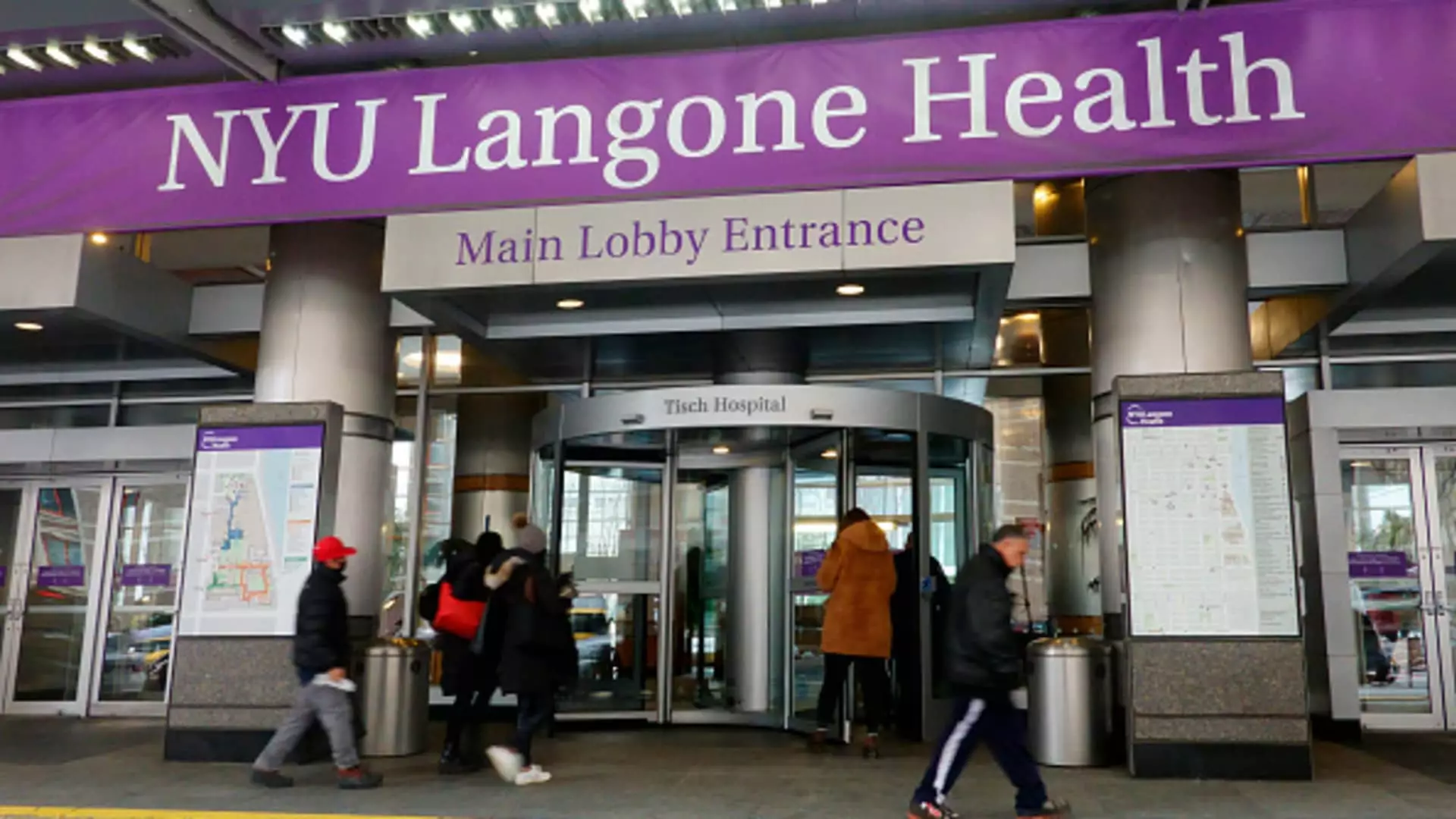In 2018, New York University’s Grossman School of Medicine sculpted headlines by launching a revolutionary policy: offering full-tuition scholarships to every student, irrespective of their financial circumstances. This move was hailed as a noble endeavor, an initiative aimed at democratizing medical education. However, beneath the layers of this well-meaning facade lies an unsettling paradox. While creating the illusion of expanded opportunities, the results have unveiled a stark reality—a decrease in the representation of financially disadvantaged students in medical school admissions.
Skyrocketing applications followed suit in 2019, yet simultaneously, the percentage of students from low-income backgrounds plummeted from 12% to a mere 3%. Far from establishing an equitable educational system, NYU’s model has inadvertently shifted the scales favorably towards those from middle to higher-income brackets. This troubling trend raises an essential question: can a policy designed for inclusivity inadvertently reinforce systemic inequalities?
Admissions Aftershock: The Danger of Increased Competition
Jamie Beaton, the co-founder and CEO of Crimson Education, articulates a crucial insight: “Tuition-free colleges experience surges in application numbers, dramatically boosting the competitive intensity of the admissions process.” This surge creates a hyper-competitive environment, one that favors candidates with access to resources like test preparation and extracurricular activities, which, shockingly, tend to skew towards wealthier families.
With tuition-free initiatives, aspiring health professionals are left in a chaotic admissions vortex where the stakes are higher. The unique advantage of having affluent backgrounds translates into tangible resources, like tailored tutoring and comprehensive extracurricular involvement, which are essential for navigating a highly selective admission process. The intended equalizing effect of freeing students from tuition burdens paradoxically consolidates an elite class of applicants.
A False Sense of Security: The Rhetoric of Meritocracy
NYU’s spokesperson, Arielle Sklar, champions the cause of enabling students to pursue careers based on passion rather than financial constraints. Yet, despite her admirable intentions, her argument does not confront the growing rift within educational access driven by rising application numbers from wealthier families. The concept of meritocracy remains a hollow notion when the playing field is inherently tilted.
As elite institutions like Harvard, Dartmouth, and MIT adopt similar tuition-free policies, the rising tide of affluent students may drown the aspirations of underprivileged candidates who desperately yearn for equal footing. The rhetoric surrounding tuition-free education resembles an alluring mirage—promising equity but ultimately favoring those already benefitting from systemic privilege.
Giant Steps Backwards for Low-Income Students
Christopher Rim, the CEO of Command Education, and Eric Greenberg of the Greenberg Educational Group both echo a disconcerting sentiment. They caution against unwittingly creating barriers—more applications lead to heightened competition and could disproportionately disadvantage low-income students. The accompanying sense of exclusion that follows is both demoralizing and detrimental.
In the current atmosphere, where taking on student debt is a towering fear among all students, the allure of tuition-free education may paradoxically push lower-income students out of the race altogether. As college tuition continues its relentless ascent—averaging around $58,600 for private institutions in 2024-25—the landscape is arguably becoming more treacherous for those who can’t afford pricey preparatory services or extensive networks that wealthier students often take for granted.
Affordability Arms Race: Hope or Harm?
As top-tier universities engage in an “affordability arms race,” experts caution that their financial aid packages, though generous, inadvertently steer focus away from the most needy demographics. Wealthy families could soon find themselves at the front of the educational queue, winning seats at coveted institutions that aim to craft a polished and well-rounded class. The logic of needing wealthier students—who will likely contribute substantial donations post-graduation—further skews the conversation away from inclusivity, instead favoring the status quo.
Moreover, Robert Franek from The Princeton Review emphasizes a critical reality: “More than 95% of four-year colleges in the U.S. are tuition driven.” Many institutions lack the financial backing to implement such sweeping changes without jeopardizing their operational viability. The notion that broad policies can be enacted without serious consequences skirts around the challenges faced by less affluent colleges in maintaining financial sustainability.
A Silver Lining: Rethinking Educational Accessibility
Navigating the complexities of funding in higher education doesn’t hinge solely on lowering tuition costs. James Lewis of the National Society of High School Scholars proposes that students and their families need to look beyond the tags attached to institutions. Identifying resources like scholarships, financial aid, or even work-study opportunities could offset some financial burdens significantly. However, the reality remains that systemic barriers must first be dismantled to create truly equitable access to education.
While tuition-free models have the potential to democratize education, they must be approached with caution. The higher education landscape is rife with contradictions, as the noble intention of enhancing accessibility may end up favoring those it sought to uplift at the outset. As discussions on this topic continue, it becomes increasingly clear that equity in education is as much about building pathways as it is about dismantling systemic roadblocks. The battle for true education equity is ongoing, and the stakes have never been higher.

